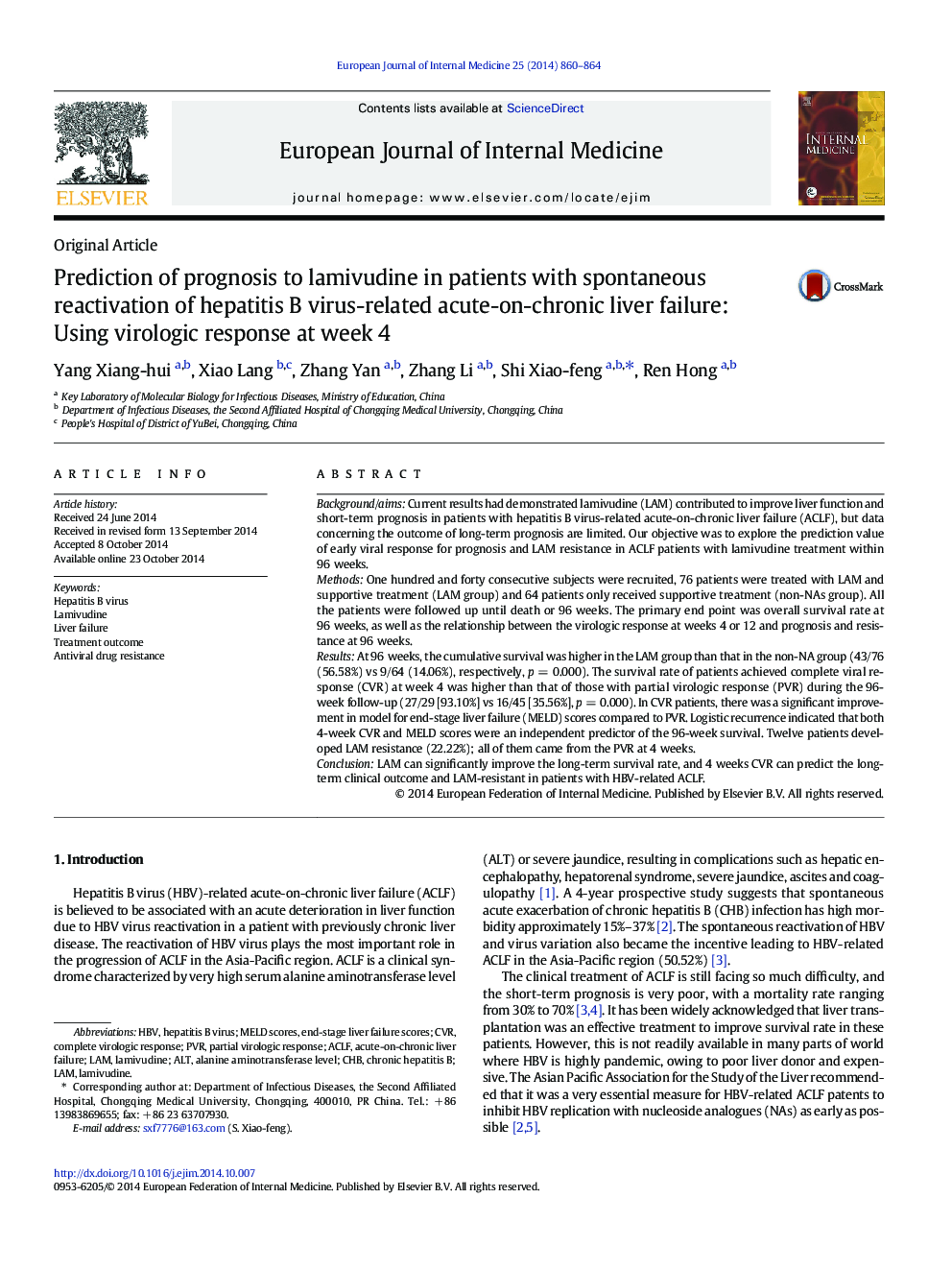| Article ID | Journal | Published Year | Pages | File Type |
|---|---|---|---|---|
| 3466104 | European Journal of Internal Medicine | 2014 | 5 Pages |
•The study explored the 96-week prognosis of HBV-related ACLF patients treated by LAM.•The study also explored drug resistance of HBV-related ACLF patients treated by LAM.•The survival of patients with CVR at week 4 was higher than that of those with PVR.•CVR at week 4 was an independent predictor of long-term survival.•CVR at week 4 had high predictive value for LAM resistance.
Background/aimsCurrent results had demonstrated lamivudine (LAM) contributed to improve liver function and short-term prognosis in patients with hepatitis B virus-related acute-on-chronic liver failure (ACLF), but data concerning the outcome of long-term prognosis are limited. Our objective was to explore the prediction value of early viral response for prognosis and LAM resistance in ACLF patients with lamivudine treatment within 96 weeks.MethodsOne hundred and forty consecutive subjects were recruited, 76 patients were treated with LAM and supportive treatment (LAM group) and 64 patients only received supportive treatment (non-NAs group). All the patients were followed up until death or 96 weeks. The primary end point was overall survival rate at 96 weeks, as well as the relationship between the virologic response at weeks 4 or 12 and prognosis and resistance at 96 weeks.ResultsAt 96 weeks, the cumulative survival was higher in the LAM group than that in the non-NA group (43/76 (56.58%) vs 9/64 (14.06%), respectively, p = 0.000). The survival rate of patients achieved complete viral response (CVR) at week 4 was higher than that of those with partial virologic response (PVR) during the 96-week follow-up (27/29 [93.10%] vs 16/45 [35.56%], p = 0.000). In CVR patients, there was a significant improvement in model for end-stage liver failure (MELD) scores compared to PVR. Logistic recurrence indicated that both 4-week CVR and MELD scores were an independent predictor of the 96-week survival. Twelve patients developed LAM resistance (22.22%); all of them came from the PVR at 4 weeks.ConclusionLAM can significantly improve the long-term survival rate, and 4 weeks CVR can predict the long-term clinical outcome and LAM-resistant in patients with HBV-related ACLF.
Graphical abstractCumulative survival during 96 weeks in both CVR and PVR at baseline and weeks 4, 12 and 24.Figure optionsDownload full-size imageDownload high-quality image (39 K)Download as PowerPoint slide
